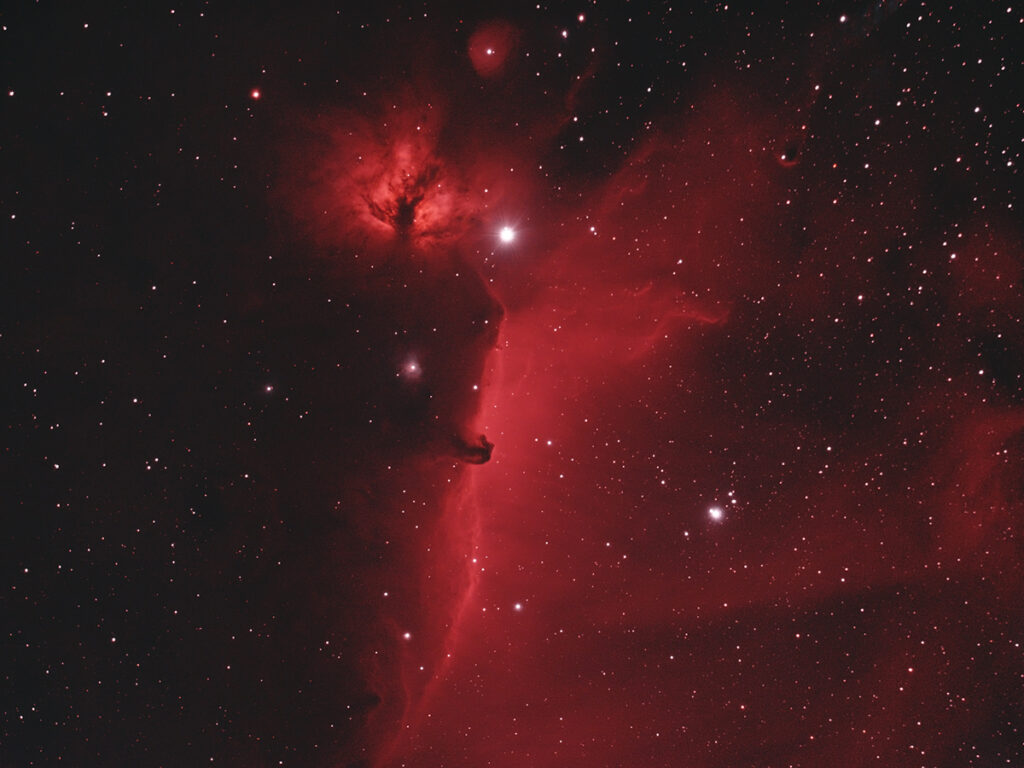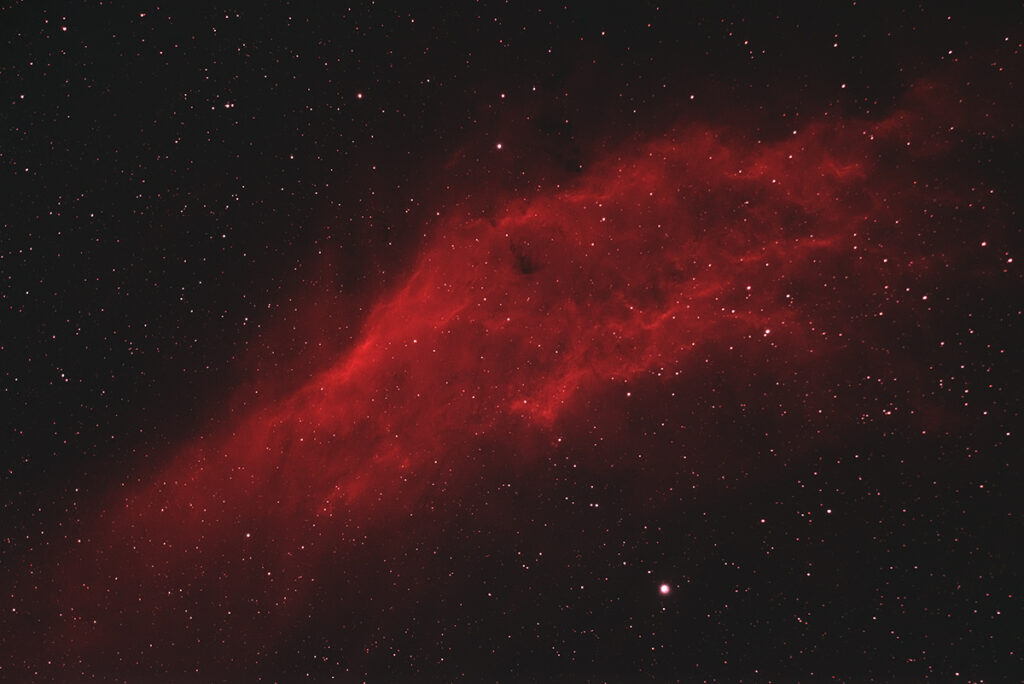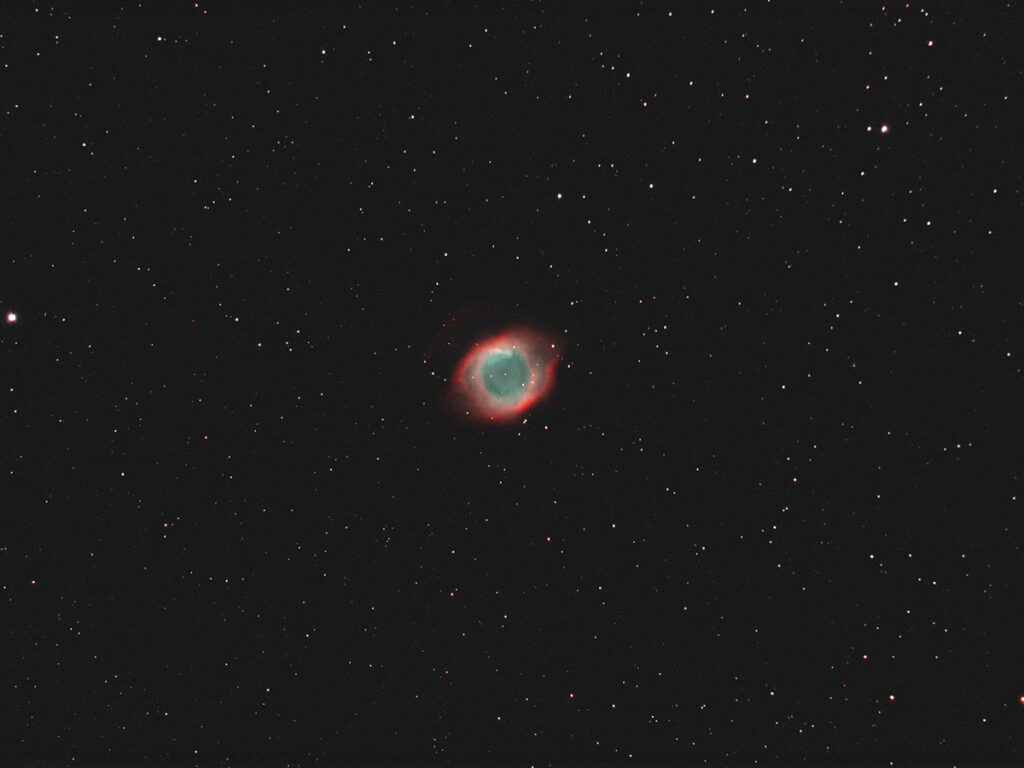
Telescope: ES DHL Comet Hunter MN6 at f/4.8, Orion Atlas EQ-G
Camera: Baader modified Nikon D610
Filter: 2” Radian Triad Ultra Hb, OIII, Ha, SII filter
Guide scope: Williams Optics 50mm, ASI290MM mini, PHD
Exposure: 12x300sec, ISO 400, saved as RAW
Darks: Internal (Long Exposure Noise Reduction On)
Flats: 32×1/5sec, tee shirt flats taken at dusk
Average Light Pollution: Red zone, fair transparency
Lensed Sky Quality Meter: 18.6 mag/arc-sec^2
Stacking: Mean with a 1-sigma clip.
White Balance: Nebulosity Automatic
Software: Backyard Nikon, Nebulosity, Deep Sky Stacker, Photoshop
This is a very busy region of the sky near Alnitak, the eastern star in the belt of Orion. Alnitak is the brilliant star at the top of this field. NGC 2024 (the Flame Nebula) is to the left and the beautiful red emission nebula IC 434 drapes down the center of the field with the iconic Horsehead Nebula (Barnard 33) pushing up through it. To the left are the reflection nebula NGC 2023 and the tiny IC 435. To the lower right is Sigma Orionis, a wonderful complex of stars that is a fine target for binoculars and small telescopes. In larger scopes it resolves into a wonderful group of double and triple stars.
Alnitak rises in the east as the sky darkens.



Recent Comments